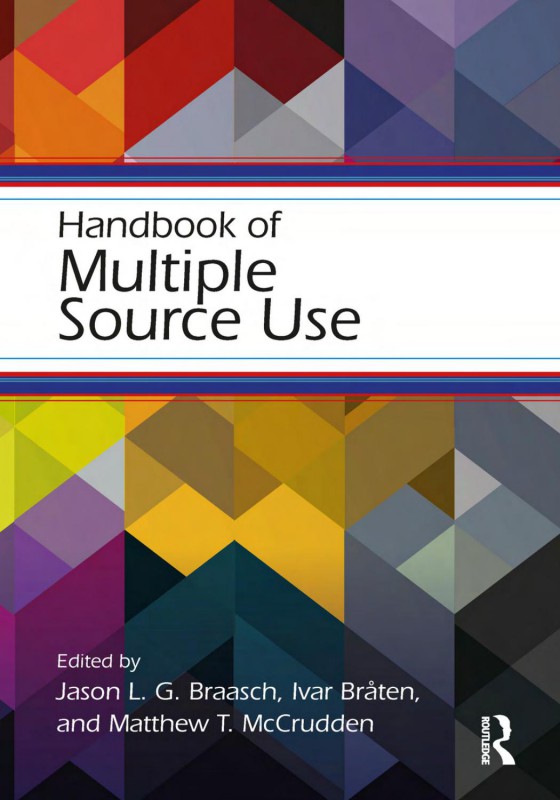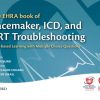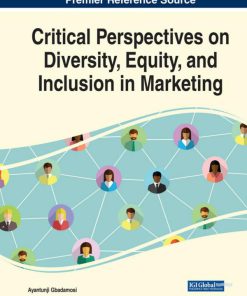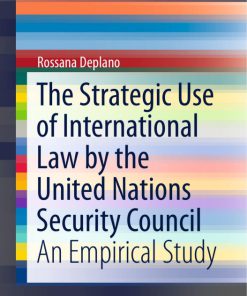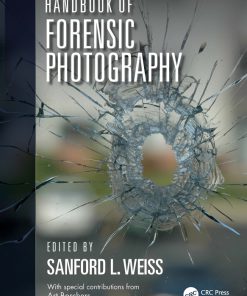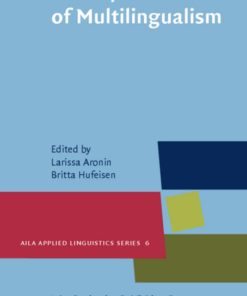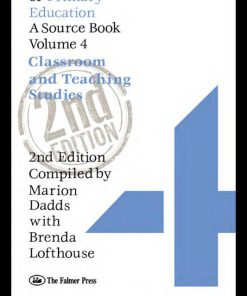(Ebook PDF) Handbook of Multiple Source Use 1st edition by Jason Braasch 1317238192 9781317238195 full chapters
$50.00 Original price was: $50.00.$25.00Current price is: $25.00.
Authors:Jason L. G. Braasch, Ivar Bråten, Matthew T. McCrudden , Series:Psychology [233] , Author sort:Jason L. G. Braasch, Ivar Bråten, Matthew T. McCrudden , Languages:Languages:eng , Published:Published:Feb 2018 , Publisher:Routledge
Handbook of Multiple Source Use 1st edition by Jason L.G. Braasch – Ebook PDF Instant Download/DeliveryISBN: 1317238192, 9781317238195
Full download Handbook of Multiple Source Use 1st edition after payment.
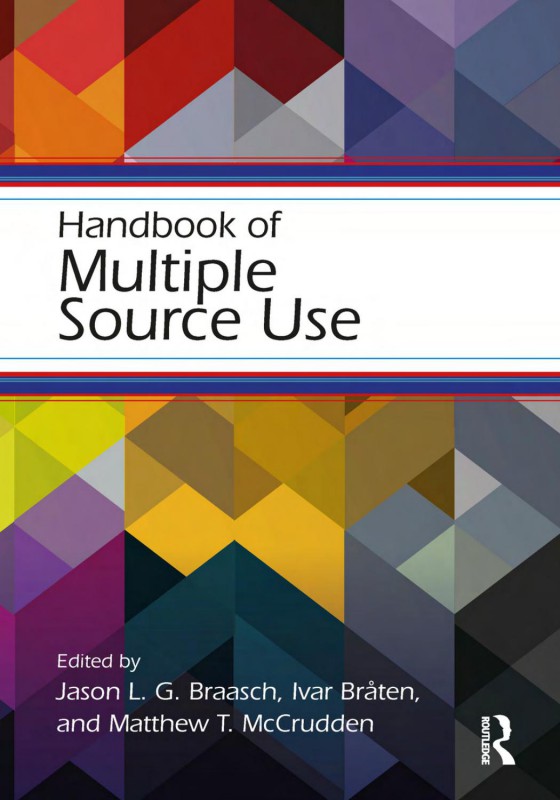
Product details:
ISBN-10 : 1317238192
ISBN-13 : 9781317238195
Author : Jason L.G. Braasch
The Handbook of Multiple Source Use draws on theory and research within cognitive and educational psychology, the learning sciences, disciplinary education, information literacy, reading psychology, and social psychology, to present the first comprehensive research volume on this topic. Many learners both in and out of school have almost instantaneous access to an enormous range of information sources at present. In this book, broken into six sections, international scholars come together toward understanding factors that influence how individuals cope with the challenge of building knowledge from diverse, often conflicting, information.
Handbook of Multiple Source Use 1st Table of contents:
1 Introduction to Research on Multiple Source Use
Introduction
Research on Multiple Source Use
Goals of This Handbook
Themes of This Handbook
Overview of the Sections and Chapters
References
Section I Theoretical Frameworks
2 Representations and Processes in Multiple Source Use
Reading Single Vs. Multiple Texts: Same or Different Processes?
Overview of Representations and Processes
Using Resolv to Examine Task and Text Interactions
Discussion
References
3 Cold and Warm Perspectives on the Cognitive Affective Engagement Model of Multiple Source Use
Cold Perspectives on Multiple Source Use
Cold Factors in Msu
Warm Perspectives on Multiple Source Use
Development of the Cognitive Affective Engagement Model
Multiple Source Processing According to the Caem
Initiating Task
Default Stance
Msu Processes and Behaviors
Caem-Like Profiles in Prior Research
Future Directions
Instructional Implications
Conclusion
References
4 Toward a New Literacies Perspective of Synthesis: Multiple Source Meaning Construction
Borrowing From New Literacies Theory
Purpose
Text
Readers
Technologies
Context
Underlying Principles for Synthesis as Multiple Source Meaning Construction
The Journey Forward
Note
References
5 a Social Psychological Perspective on Multiple Source Use: Elaboration and Persuasion
Theoretical Background
Research Linking Multiple Sources to Elaboration and Elaboration to Resistance to Change
Conclusions and Implications for Future Research
References
Section II Individual Differences, Cognitive Mechanisms, and Contextual Factors in Multiple Source Use
6 Individual Differences in Multiple Document Comprehension
Theoretical Background
Cognitive Differences
Metacognitive Differences
Motivational and Affective Differences
Socio-Cultural Differences
Individual Differences Interact With Each Other and With the Task Context
Development of Individual Differences
Educational Implications
Future Directions
References
7 Potential Processing Challenges of Internet Use Among Readers With Dyslexia
Purpose of the Chapter
Overview of the Chapter
Single Source Reading and Dyslexia
Multiple Source Use in a Digital Context and Potential Challenges for Readers With Dyslexia
Empirical Research on Dyslexia and Internet Reading
Conclusion and Future Research
References
8 Strategic Processing in Accessing, Comprehending, and Using Multiple Sources Online
Goal for the Chapter
(Re)Conceptualizing Reading With Multiple Online Sources
Strategic Processing of Multiple Sources Online
How Strategic Processing Complements Accessing, Comprehending, and Using Multiple Online Sources
Implications for Theory, Research, and Practice
Conclusion
References
9 the Role of Validation in Multiple-Document Comprehension
Introduction and Purpose
Comprehension and Validation of Text Information
A Two-Step Model of Validation in Multiple Texts
Step 1: Belief-Based Epistemic Monitoring of Conflicting Information
Step 2: Elaborative Processing of Conflicting Information
Consequences of Validation for Comprehension Outcomes
Continued Influence of Misinformation, False Knowledge, and Beliefs
Belief Consistency Effects in Multiple-Document Comprehension
Implications for Theory, Research, and Practice
Conclusion
Note
References
10 Text Relevance and Multiple-Source Use
Text Relevance and Goal-Focusing
Text Relevance Differs From Text Importance
Text Relevance and Source Credibility
Text Relevance, Source Credibility, and Usefulness
Conclusion and Future Directions
References
11 the Role of Conflict in Multiple Source Use
Introduction
Theoretical Background
Empirical Work
Conclusions, Implications, and Future Directions
References
Section III Multiple Source Use in Specific Content Areas
12 Multiple Source Use in History
Overview of Multiple Source Use in History
Research on Multiple Source Use in History: Historians
Translating This to Students
Research on Multiple Source Use in History: K-12 Students
Conclusions
References
13 Functional Scientific Literacy: Disciplinary Literacy Meets Multiple Source Use
How Scientists Read Scientific Articles
A Framework for Multiple Source Use
Scientific Considerations in Multiple Source Use in Science
Implications and Future Directions
Author’s Note
Note
References
14 the Role of Sourcing in Mathematics
How Do We Know Which Mathematical Statements Are True?
Sourcing in Mathematical Practice
Discussion
Notes
References
15 Multiple Source Use When Reading and Writing in Literature and Language Arts in Classroom Contexts
Introduction
A Reader/Writer-Texts Framework of Multiple Source Use in Reading and Writing in Literature and Language Arts Education
A Social-Interactive-Texts Framework of Multiple Source Use in Reading and Writing in Literature and Language Arts Education
Final Comments
Notes
References
Section IV Multiple Source Use Beyond the Classroom
16 the Provenance of Certainty: Multiple Source Use and the Public Engagement With Science
Introduction
Conceptual Building Blocks for a Theory of Provenance Processing
Why Sourcing is Crucial for Citizens’ Engagement With Science
Challenges for Citizens’ Engagements With Science
Should I Believe This? Two Types of Strategies for Judging the Quality of Scientific Knowledge Claims
The Functions of Provenance Information for the Public Engagement With Science: An Empirical Overview
The Role of Source Information in Laypeople’s Evaluation of Plausibility
The Role of Source Information in Laypeople’s Understanding of Scientific Information
Future Directions
Authors’ Note
References
17 Non-Academic Multiple Source Use on the Internet
Introduction
Theoretical Background
Empirical Findings
Conclusions
References
18 Updating of Character Information When Reading Multiple Texts for Pleasure
The Current Chapter
Mental Representations of Narratives
Constructing Character Models
Updating Character Information
Influences on Updating
The Complexity of Characters
To Be Continued . . .
References
19 Self-Regulated Learning Processes and Multiple Source Use in and Out of School
Theoretical Background
Review of Literature on Srl and Multiple Source Use
Before Processes
During Processes
After Processes
Interventions on Srl During Multiple Source Use
Implications for Theory, Research, and Practice
Conclusion
References
Section V Multiple Source Use Interventions
20 Effects of Instructional Conditions on Comprehension From Multiple Sources in History and Science
Theoretical Background
Summary of Empirical Research
Summary of Research Findings, Current Challenges, and Practical Implications
Author Note
References
21 Learning to Read While Reading to Learn: The Central Role of Multiple Documents in Two Instructional Programs
Context
Word Generation’s Use of Multiple Texts
Stari’s Use of Multiple Texts
Effectiveness
Implications for Instruction and Intervention
Acknowledgments
References
22 Promoting Multiple-Text Comprehension Through Motivation in the Classroom
Introduction
Differentiated Cognitive Processes of Reading
Attributes of Reading Processes
Textual Characteristics
Differentiated Motivations Related to Reading
Attributes of Motivation Processes
Affective Salience
Cognition–Motivation Alignment Hypothesis
Assessing the Cognitive–Motivation Alignment Hypothesis
Instructional Practices Related to the Alignment Hypothesis
Instruction in Lower-Order Reading Processes
Instruction in a Balance of Lower and Higher-Order Reading Processes
Instruction for Higher-Order Reading Processes
Research Needs
References
23 Instruction to Promote Information Problem Solving on the Internet in Primary and Secondary Education: A Systematic Literature Review
Introduction
Information-Problem Solving
Design Principles to Foster Information-Problem Solving
Method
Results
Discussion
References
Appendix 23.1
Section VI Assessment of Multiple Source Use
24 Complementary Methods for Assessing Online Processing of Multiple Sources
Introduction
Processing Multiple Sources: What is Involved?
Note-Taking
Thinking Aloud
Reading Time
Eye Movements
A Novel Approach: Physiological Measures
Implications for Theory, Research, and Practice
Acknowledgments
References
25 Scenario-Based Assessment of Multiple Source Use
Prologue
Overview of the Chapter
Multiple Source Use Constructs: What is it and How Can We Assess It?
Md-Trace Model: Deconstructing the Construct of Multiple Source Use
From Cognitive Model to Assessment Design
The Assessment Paradox: How to Measure and Support Multiple Source Use
The Global, Integrated Scenario-Based Assessment (Gisa) Approach
Key Features of Gisa
How the Features Are Assembled in an Assessment Context
Illustrating Multiple Source Use Through a Gisa Example: Connecting the Md-Trace Model to Assessment
Section 1: Setting Up the Task Model – What Are Students Supposed to Do and Produce?
Section 2: Measuring Background Knowledge – What Do Students Know About the Topic?
Section 3: Building Up Students’ Understanding – Single-Source Comprehension
Section 4: Evaluating Web Links – Assess Item Relevance
Section 5: Gaining a Deeper Understanding of the Topic – Update Task Model and Create a Documents Model
Section 6: Opposing Viewpoints and Counterargument– Update Documents Model
Section 7: Produce a Flyer – Create a Task Product
Properties of Gisa
Applications of Gisa
Other Scenario-Based Assessment Research Programs
Implications for Research and Practice
Summary
Acknowledgments
References
26 Assessment of Multiple Resource Comprehension and Information Problem Solving
Assessment: A Process of Reasoning From Evidence
What to Assess and How to Assess It
Implications for the Design of Assessments
Further Reading
References
27 Assessing Online Collaborative Inquiry and Social Deliberation Skills as Learners Navigate Multiple Sources and Perspectives
Theoretical Background
Collaborative Learning
Social Deliberation
Assessments of Online Inquiry, Collaboration, and Social Deliberation
Assessments of Online Inquiry
Assessments of Collaborative Problem Solving
Assessments of Online Collaborative Inquiry and Social Deliberation
Implications for Theory, Research, and Practice
References
28 Computer-Based Assessment of Essays Based on Multiple Documents: Evaluating the Use of Sources
Theoretical Perspectives on What Should Be Assessed
Dimensions of Essays That Should Be Evaluated
What is Needed to Evaluate Essays Based on Multiple Texts
Promising Approaches in Automated Essay Assessment
Computational Tools for Analyzing Essay Content
Example Studies Using Nlp to Study Multiple Documents Processing
Challenges in Developing Automated Essay Evaluation Systems
Conclusions and Future Directions
References
29 Reflections and Future Directions
Reflecting on Core Questions Posed in Chapter 1
Directions for Future Research
Conclusion
People also search for Handbook of Multiple Source Use 1st:
handbook of multiple comparisons
handbook of multicultural assessment
handbook of multicultural counseling
handbook of multisensor data fusion
a handbook of alternative monetary economics
You may also like…
eBook PDF
(Ebook PDF) Robotics Mechanical Engineering Handbook 1st edition by Frank Kreith full chapters

